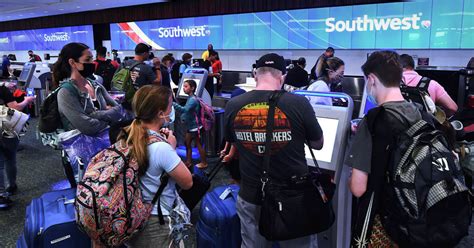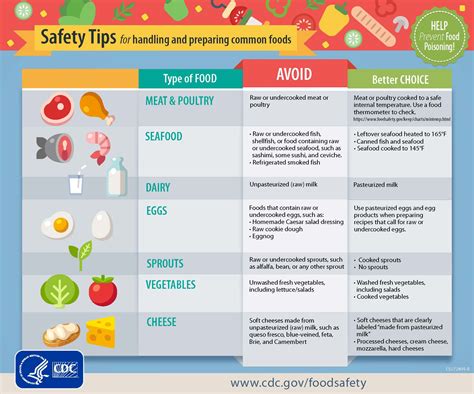
Southwest Airlines’ revamped boarding process and fare structure are drawing sharp criticism from travelers, who are expressing their frustration over the changes they say diminish the airline’s value proposition.
Southwest Airlines, long celebrated for its customer-friendly policies like free checked bags and flexible booking options, is facing a wave of passenger discontent following significant changes to its boarding procedures and fare categories. These alterations, designed to boost revenue and streamline operations, have sparked widespread outrage among loyal customers who feel the airline is abandoning the principles that set it apart from competitors.
The most contentious change involves a revision to the EarlyBird Check-In system. Previously, EarlyBird Check-In, available for purchase, provided passengers with automatic check-in 36 hours before departure, granting them earlier boarding positions and a better chance of securing preferred seating. Now, Southwest has adjusted the system, increasing the price based on flight demand and route popularity. This means that frequent flyers who have come to rely on EarlyBird Check-In to secure a good seat are now finding it significantly more expensive, sometimes costing upwards of $30-$60 each way, or more for highly popular routes. This dynamic pricing model has been criticized as unpredictable and unfair, particularly for budget-conscious travelers.
“It feels like they’re nickel-and-diming us for everything,” said one disgruntled Southwest flyer on social media. “The whole point of flying Southwest was the straightforward pricing and the ability to get a decent seat without paying extra for seat assignments. Now, it’s just becoming like every other airline.”
In addition to the EarlyBird Check-In changes, Southwest has also restructured its fare categories, further complicating the boarding process. The airline now offers multiple fare tiers, each with varying benefits and boarding priorities. While specific details of the fare restructuring weren’t explicitly provided in the source article, it can be inferred that higher-priced fares offer greater boarding advantages, potentially pushing those with lower-tier tickets further back in the boarding queue. This tiered system exacerbates the EarlyBird Check-In issue, as it creates a competitive environment where passengers feel pressured to pay more for better boarding positions, undermining Southwest’s traditional “open seating” policy.
The airline’s boarding process, traditionally based on boarding groups (A, B, and C) assigned at check-in, has always been a defining characteristic of the Southwest experience. However, these changes are perceived as diluting the fairness of the system, leading to increased anxiety and frustration among passengers. Customers complain that the combination of dynamic EarlyBird Check-In pricing and tiered fare categories creates a situation where the open seating policy is effectively rendered meaningless, as those unwilling or unable to pay extra are consistently relegated to the least desirable seats.
Southwest’s decision to implement these changes appears to be driven by a desire to improve its financial performance and remain competitive in an increasingly challenging market. The airline industry has faced significant pressures in recent years, including rising fuel costs, increased labor expenses, and intense competition from low-cost carriers. By optimizing its revenue streams through dynamic pricing and fare restructuring, Southwest aims to bolster its bottom line and invest in improvements to its fleet and infrastructure.
However, the airline’s approach has backfired, alienating a significant portion of its customer base. Many loyal Southwest flyers feel betrayed by what they perceive as a shift away from the airline’s core values of affordability, transparency, and customer service. The backlash on social media has been particularly fierce, with passengers vowing to switch to other airlines that offer more predictable pricing and a more comfortable travel experience.
The long-term impact of these changes on Southwest’s brand reputation remains to be seen. While the airline may achieve short-term financial gains, it risks eroding the goodwill and loyalty it has cultivated over decades. To mitigate the damage, Southwest needs to carefully consider the concerns of its customers and explore alternative strategies that balance revenue optimization with maintaining its commitment to customer satisfaction. This could involve offering more transparent pricing, providing clearer communication about the boarding process, or introducing innovative solutions that enhance the overall travel experience without penalizing budget-conscious travelers.
The airline’s leadership will have to decide whether these changes are worth the cost of alienating their loyal customer base. Southwest has always prided itself on being different, and these changes bring them closer in line with the practices of their competitors, and away from the qualities that have made them unique. They risk losing the “Southwest magic” that has attracted so many customers for so long. The coming months will be crucial in determining whether Southwest can weather this storm of customer discontent and regain the trust of its passengers.
Background and Historical Context
Southwest Airlines was founded in 1967 with a simple mission: to provide affordable, reliable air travel with a focus on customer service. This mission resonated deeply with travelers, and Southwest quickly gained a reputation for being a friendly, no-frills airline that offered a refreshing alternative to the more traditional carriers.
One of the key elements of Southwest’s success was its unique boarding process, which eschewed assigned seating in favor of an open seating policy. Passengers were assigned boarding groups (A, B, and C) based on when they checked in, and they could then choose their seats on a first-come, first-served basis. This system was designed to be fair and efficient, and it eliminated the hassle of pre-selecting seats or paying extra for preferred locations.
Another defining characteristic of Southwest was its commitment to transparency and affordability. The airline offered low fares, free checked bags, and no change fees, making it an attractive option for budget-conscious travelers. These policies, combined with its friendly customer service, helped Southwest build a loyal following of passengers who appreciated the airline’s value proposition.
Over the years, Southwest has faced numerous challenges, including rising fuel costs, increased competition, and economic downturns. However, the airline has consistently adapted and evolved while remaining true to its core values. It has expanded its route network, invested in new aircraft, and implemented innovative technologies to improve the travel experience.
In recent years, however, Southwest has begun to make changes to its policies and practices that have raised concerns among some customers. The introduction of EarlyBird Check-In, while initially popular, has been criticized for creating a two-tiered system where those who pay extra get preferential treatment. The recent changes to the EarlyBird Check-In pricing structure and the restructuring of fare categories have further exacerbated these concerns, leading to the current wave of passenger outrage.
Analysis of the Changes and Their Impact
The changes to Southwest’s boarding process and fare structure represent a significant departure from the airline’s traditional values. While the airline argues that these changes are necessary to improve its financial performance and remain competitive, they risk alienating its loyal customer base and eroding its brand reputation.
The dynamic pricing of EarlyBird Check-In is particularly problematic. By increasing the price based on demand, Southwest is essentially penalizing passengers who fly on popular routes or during peak travel times. This undermines the airline’s commitment to affordability and makes it more difficult for budget-conscious travelers to secure a good seat.
The restructuring of fare categories, while not fully detailed in the source article, also raises concerns about transparency and fairness. If higher-priced fares offer greater boarding advantages, this effectively creates a tiered system where those who pay more get to board earlier and choose their seats before others. This undermines the open seating policy and creates a sense of inequity among passengers.
These changes are likely to have a negative impact on the overall travel experience for many Southwest customers. Passengers may feel pressured to pay extra for EarlyBird Check-In or higher-priced fares to avoid being relegated to the least desirable seats. This can lead to increased anxiety and frustration, diminishing the enjoyment of the travel experience.
Furthermore, the changes may damage Southwest’s brand reputation. The airline has long been known for its customer-friendly policies and its commitment to affordability. By shifting away from these values, Southwest risks losing the trust and loyalty of its passengers.
Southwest’s Response and Future Outlook
Southwest Airlines has acknowledged the concerns of its customers and has stated that it is committed to providing a positive travel experience. However, the airline has defended its decision to implement these changes, arguing that they are necessary to improve its financial performance and remain competitive.
“We are always evaluating our products and services to ensure that we are meeting the needs of our customers and providing the best possible value,” said a Southwest spokesperson in a statement. “We believe that these changes will allow us to continue to offer low fares and a great travel experience for all of our passengers.”
It remains to be seen whether Southwest’s response will be enough to quell the customer outrage. The airline will need to carefully monitor the impact of these changes on its brand reputation and customer loyalty. It may also need to consider alternative strategies that balance revenue optimization with maintaining its commitment to customer satisfaction.
One possible solution would be to offer more transparent pricing for EarlyBird Check-In, providing passengers with a clearer understanding of how the price is determined. Another option would be to introduce innovative solutions that enhance the overall travel experience without penalizing budget-conscious travelers.
Ultimately, Southwest’s success will depend on its ability to adapt and evolve while remaining true to its core values. The airline must find a way to balance its financial goals with its commitment to customer service and affordability. If it can do that, it can weather this storm of customer discontent and regain the trust of its passengers. If not, it risks losing its unique position in the airline industry and becoming just another faceless carrier.
Competitor Analysis and Market Position
The changes at Southwest come at a time of intense competition in the airline industry. Low-cost carriers like Spirit and Frontier are aggressively competing on price, while legacy carriers like American, Delta, and United are offering a wider range of amenities and services.
Southwest has traditionally positioned itself as a hybrid carrier, offering low fares and customer-friendly policies while also providing a more comfortable and convenient travel experience than the ultra-low-cost carriers. However, the recent changes to its boarding process and fare structure may blur this distinction, making it more difficult for Southwest to differentiate itself from its competitors.
If Southwest continues to move away from its traditional values, it risks losing its competitive advantage. Passengers who are primarily concerned with price may choose to fly with ultra-low-cost carriers, while those who value comfort and convenience may opt for legacy carriers.
To maintain its market position, Southwest needs to carefully consider the needs and preferences of its target audience. It must find a way to offer competitive fares while also providing a travel experience that is both enjoyable and affordable. This may require the airline to rethink its pricing strategies, invest in new technologies, and improve its customer service.
The airline must also be aware that its competitors will likely try to capitalize on the customer discontent surrounding the changes. Other airlines may offer targeted promotions or highlight their more transparent pricing policies to attract disgruntled Southwest flyers. Southwest will need to be proactive in defending its market share and communicating its value proposition to customers.
The Role of Technology and Innovation
Technology plays an increasingly important role in the airline industry. Airlines are using technology to improve efficiency, enhance the customer experience, and optimize revenue. Southwest is no exception, and the airline has invested heavily in technology in recent years.
The airline’s website and mobile app are key tools for managing bookings, checking in, and accessing flight information. Southwest also uses technology to manage its fleet, optimize its route network, and track its operational performance.
The recent changes to Southwest’s boarding process and fare structure are also enabled by technology. The dynamic pricing of EarlyBird Check-In is made possible by sophisticated algorithms that analyze demand and adjust prices accordingly. The restructuring of fare categories is facilitated by advanced booking systems that allow passengers to choose from a variety of fare options.
However, technology can also be a source of frustration for passengers. Glitches in booking systems, delays in flight information, and difficulties using mobile apps can all detract from the travel experience. Southwest needs to ensure that its technology is reliable and user-friendly, and that it enhances rather than detracts from the customer experience.
The airline should also explore new technologies that can improve the boarding process and reduce congestion at airports. Biometric scanning, mobile boarding passes, and automated baggage handling systems can all help to streamline the travel experience and make it more efficient.
Furthermore, Southwest should consider using technology to personalize the travel experience for its customers. By collecting data on passenger preferences, the airline can offer customized recommendations for flights, hotels, and activities. It can also use technology to provide real-time updates on flight status, gate changes, and baggage claim information.
By embracing technology and innovation, Southwest can improve its efficiency, enhance the customer experience, and maintain its competitive edge in the airline industry. However, the airline must also be mindful of the potential downsides of technology and ensure that it is used in a way that benefits both the airline and its passengers.
Conclusion: A Crossroads for Southwest Airlines
Southwest Airlines stands at a crossroads. The recent changes to its boarding process and fare structure have sparked widespread customer outrage, raising questions about the airline’s commitment to its traditional values.
While the airline argues that these changes are necessary to improve its financial performance and remain competitive, they risk alienating its loyal customer base and eroding its brand reputation. Southwest must carefully consider the concerns of its customers and explore alternative strategies that balance revenue optimization with maintaining its commitment to customer satisfaction.
The airline’s future success will depend on its ability to adapt and evolve while remaining true to its core values. It must find a way to offer competitive fares while also providing a travel experience that is both enjoyable and affordable. This may require the airline to rethink its pricing strategies, invest in new technologies, and improve its customer service.
Southwest must also be aware of the competitive landscape and the potential for other airlines to capitalize on its customer discontent. The airline needs to be proactive in defending its market share and communicating its value proposition to customers.
The coming months will be crucial in determining whether Southwest can weather this storm of customer discontent and regain the trust of its passengers. The airline’s leadership will need to make difficult choices and demonstrate a commitment to both financial sustainability and customer satisfaction. The future of Southwest Airlines hangs in the balance.
Frequently Asked Questions (FAQs)
-
What changes has Southwest Airlines made that are causing outrage? Southwest Airlines has made changes to its EarlyBird Check-In system, increasing prices dynamically based on demand and route popularity. Additionally, they have restructured fare categories, potentially giving higher-priced fares boarding advantages.
-
Why are passengers upset about the EarlyBird Check-In changes? Passengers are upset because the increased and unpredictable pricing of EarlyBird Check-In makes it more expensive to secure a good boarding position. This undermines the airline’s value proposition and the fairness of open seating.
-
How does the fare restructuring affect the boarding process? While specific details are not in the source article, it is implied that higher-priced fares offer boarding advantages. This creates a tiered system where passengers who pay more get to board earlier, diminishing the benefits of the open seating policy for those with lower-tier tickets.
-
What is Southwest Airlines’ reasoning for making these changes? Southwest Airlines states that these changes are necessary to improve its financial performance and remain competitive in an increasingly challenging market, facing rising costs and intense competition.
-
What can Southwest Airlines do to address the customer outrage? Southwest Airlines could offer more transparent pricing for EarlyBird Check-In, provide clearer communication about the boarding process, explore innovative solutions that enhance the travel experience without penalizing budget-conscious travelers, and reaffirm their commitment to customer satisfaction and affordability.









